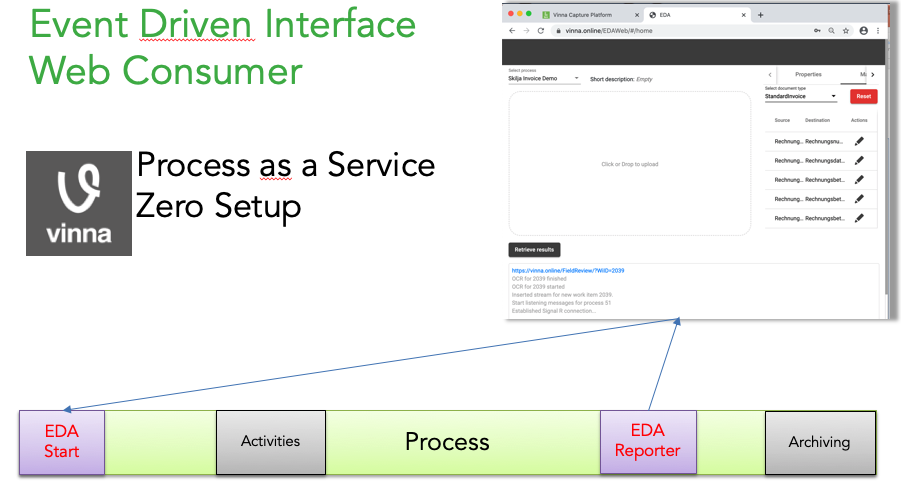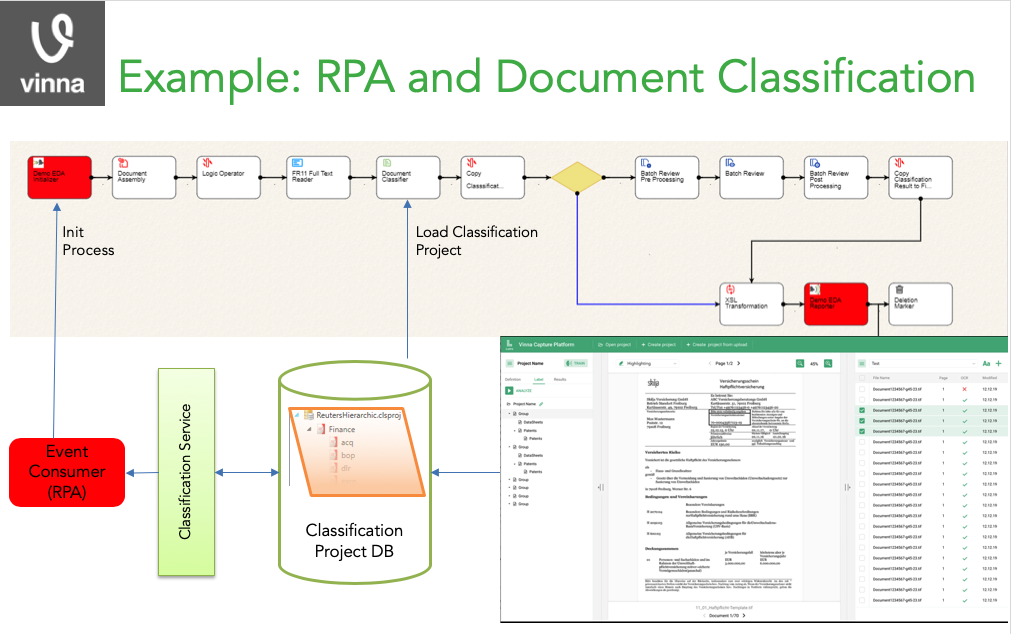Imagine that you have created a powerful process for superb document automation using all kind of advanced recognition, image processing and AI technologies available. With these technologies it is possible to automate almost any document driven process that involves repetitive cognitive tasks like classification, indexing and decision making today. VINNA by Skilja is a powerful platform that enables and orchestrates the LAERA components by Skilja to perform all these miracles. In addition VINNA plugs in a lot of other powerful tools from other technology companies like barcode recognition, office format conversion, e-Mail normalization, PDF-A generation etc. etc.
Now as this process is built and works well, the question arises how to integrate the new capabilities in your line-of-business applications and existing processes. File import and export is insecure and outdated. Full integration requires too much effort from IT that might not be available.
Fortunately there is a solution 🙂 : By plugging in an Event Driven Activity (EDA) you can enable ANY process to be accessible through a standard web service protocol. Simply by adding the EDA to an existing process you make it available to a RESTful service call. The EDA can be the only start point of a process but it can also be added in addition to existing starters like file importers, message queues or IMAP collectors that pump documents into the same process.
Typically you add one EDA starter and one or several EDA Reporter or Listeners. These are accessed through a simple web protocol by the EDA consumer. The Consumer can either be a web page (as in the example below) or a Windows application like an RPA client that automates the cognitive task scheduling. Both are provided as sample source codes with your installation. At any stage of the process the Consumer is optionally updated via event on the progress of the work item in the process. When processing is finished the results are retrieved either through an event or from a queue that is queried via REST.

The process can be deployed anywhere – there is zero setup. Simply use the URL of the service and of course the credentials for the secure and encrypted communication with the authentication service. The process can sit anywhere in the cloud and be used by any client world wide that has access –
Through EDA VINNA is used completely in slave mode and the consumer is shielded from any complexity of the process.
The process can contain any number of steps and routes, including manual correction, approvals or even sending tasks to the crowd. The Consumer will see none of this, it will simply get notified on the results on a standard API irrespective of the process. So when the process is changed and enhanced, the Consumer can stay as it is. This is the true power of process as a service. “Technology under the hood”- Especially when combined with online learning that will continuously improve the result.

A nice example is shown in the graphic above. The Consumer (in this case any RPA client) choses to use a classification service by selecting the process (through EDA) and the classification project that should be used. In this case both classification activity and classification Web designer access the same classification model in the database. Therefore an admin user can even modify the classification model and the taxonomy or create a new one. Because the process itself and the call to use it stay unchanged. This process also contains a manual correction step (Batch Review) that is conditionally used in case of uncertain results. The system can even send a link for a correction task as a web page so the user can make any decisions or corrections of submitted tasks herself without having to install anything. The corrected results in turn will then be aggregated and used for online learning. If several hundred users are using this process it will quickly optimize the results automatically without any further effort. And at all time the actually processing can happen anywhere in the world on any cloud server.
This is the power of process as a service.

